What is a Quick Sort Algorithm in Python?
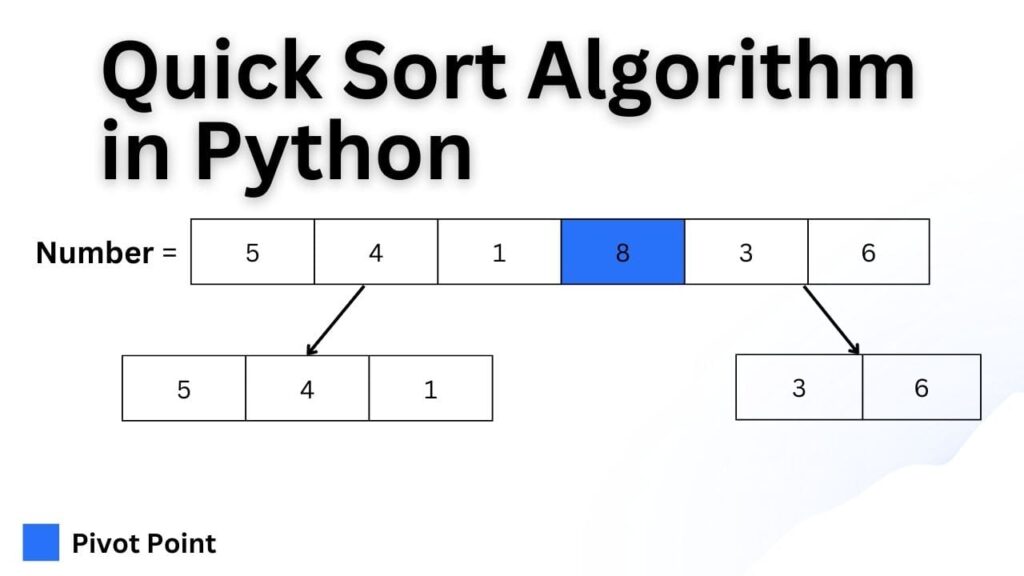
Searching Algorithms are tremendously important in various programming languages. Interestingly, there are a number of searching algorithms that are being used throughout the industries for problem solving. Unfortunately, aspiring programmers do find themselves confused about understanding the searching algorithm. Hence, we bring you the Quick Sort Algorithm in Python, which is the quickest searching algorithm.
What is a Quicksort Searching Algorithm?
Quick Sort Algorithm is the fastest searching algorithm. It’s also known as a divide and conquer algorithm, implying that it breaks the list into smaller parts to organise arrays from the smallest number to the largest.
Briefly, the Quicksort algorithm is a recursive algorithm and believes in the Partition(). Partition() is performed using Pivot Point, which is a randomly chosen number in the list, it could be any number. Basically, it will be a point from where the list will break to be organised.
Below is the detailed explanation of this.
How does Quicksort Algorithm work?
Let’s understand the Quicksort Algorithm with practical examples. We’ll implement Quicksort to a list named “Number”, which has 6 elements in it.
Number = [5,4,1,8,3,6]
[1] First step would be to choose the pivot, which could be any number in the list. However, we will assume that the 4th element number “8” has been chosen as a Pivot Point.

[2] Now, this is where the Partition() will start to play its part, Quicksort Algorithm would divide the list from the Pivot Point like shown in the image below.
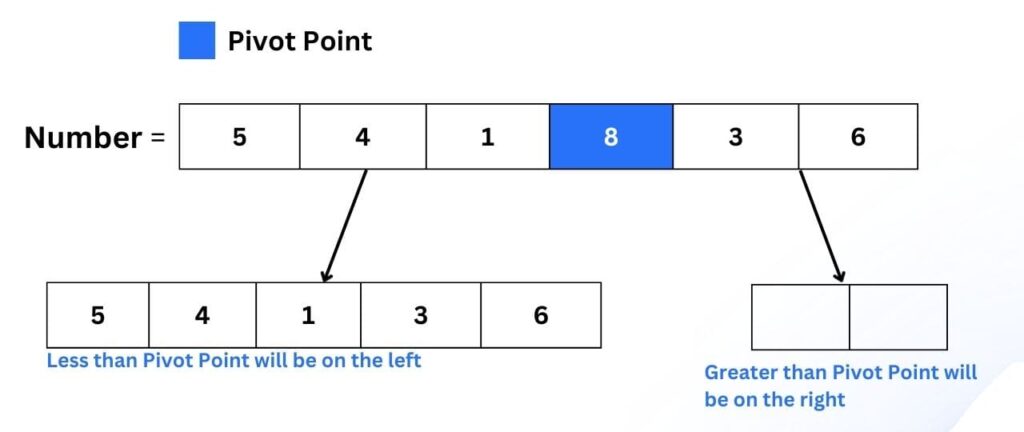
[3] Important Rule is that all the elements less than Pivot Point will be in the left sublist and all the elements greater than Pivot Point will be in the right sublist.
We will once again choose the Pivot Point. Let’s assume it’s “3”.
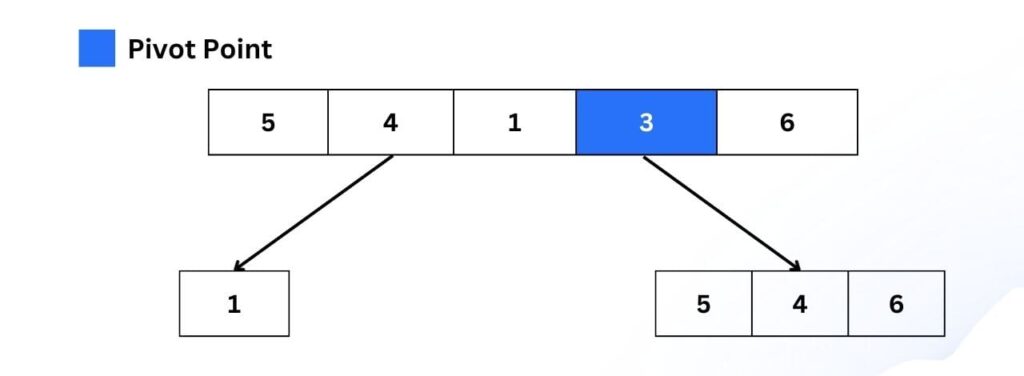
[4] Once again, we have divided the list into two sub-lists. The same thing will be repeated again. So, we will choose another Pivot Point and divide it.

[5] Finally, we have a sorted list that has been sorted and looks like this:

And this is the whole process of implementing the Quicksort algorithm on this list:
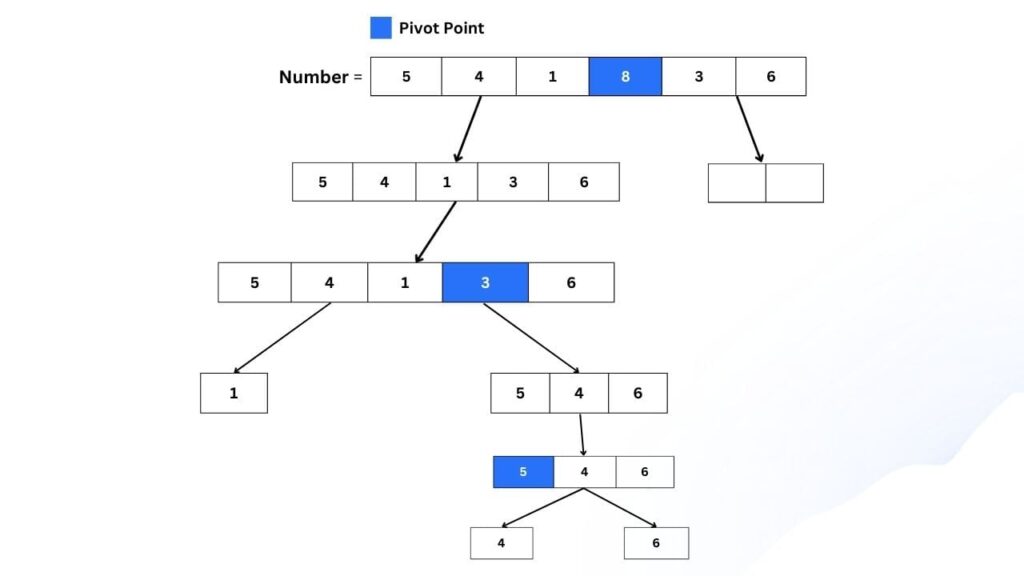
What are the Pros & Cons of Quicksort Algorithm?
Advantages:
▸It is the fastest searching algorithm with the time complexity of O(nlogn) for the average and best cases.
▸Quite tricky for the newbies to understand it or write the code for it.
Disadvantages:
▸Recursion needs to be implemented whilst implementing Quicksort searching algorithm, and recursion can be overwhelming sometimes for programmers without additional help.
▸Small errors could cause detrimental impact on the algorithm’s performance without being noticed.
Python Source Code
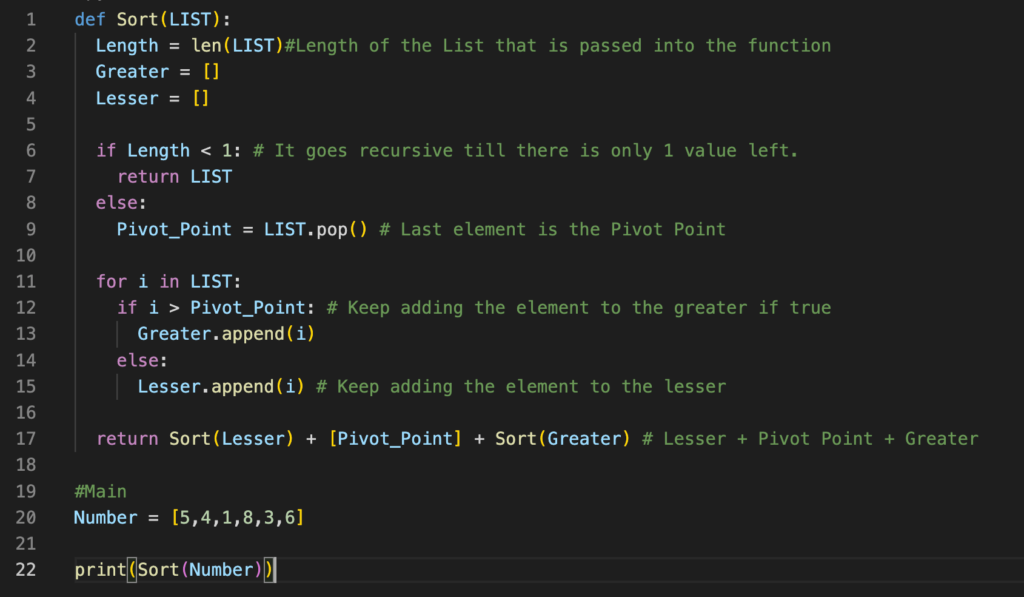
Wrap up…
There are many pros and cons of the Quicksort Algorithm. However a proven fact can’t be denied also that it is the fastest searching algorithm. No wonder, it is widely used in the industry. Sometimes it can also be tricky to implement it.
